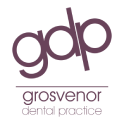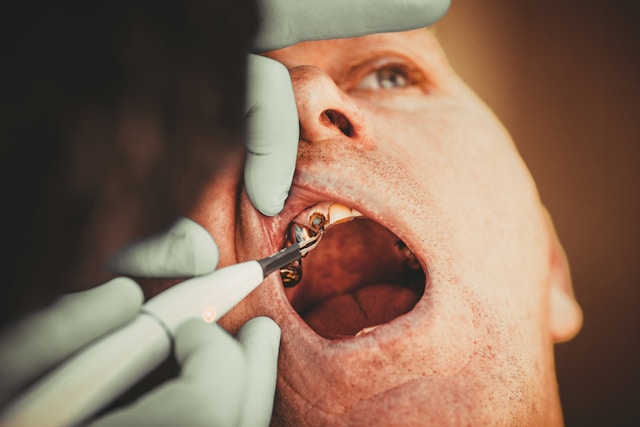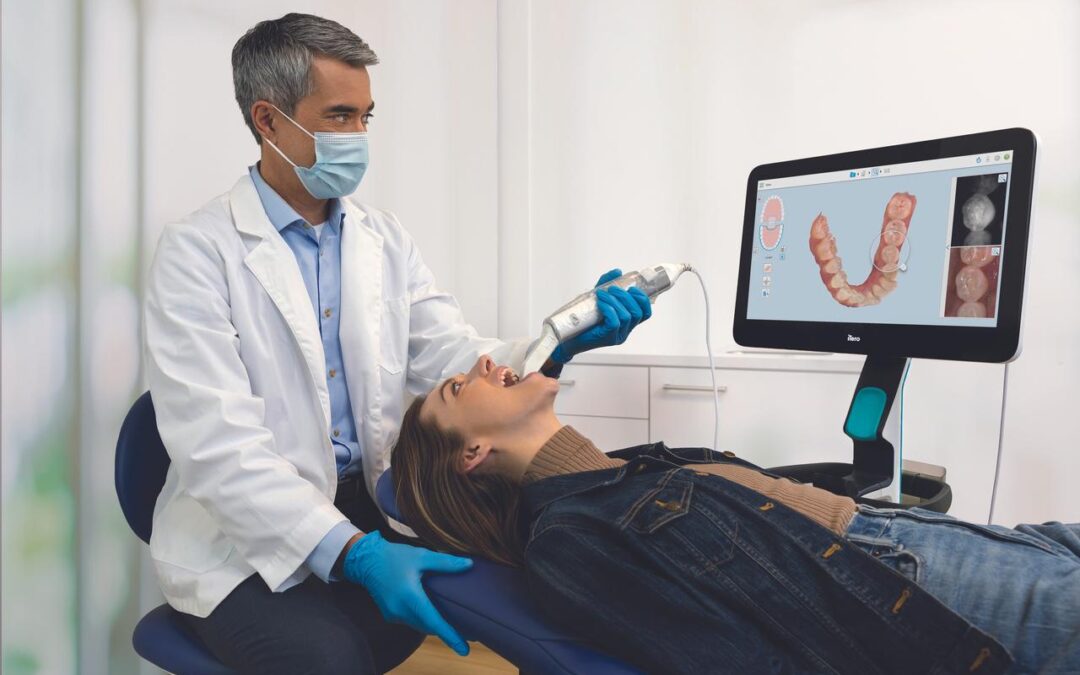In the realm of dental hygiene, advancements are continually made to ensure patients receive the most effective and comfortable treatments available. One such innovation that has revolutionised dental cleaning procedures is airflow teeth cleaning, also known as dental airflow cleaning. This cutting-edge technique has acquired a lot of attention for its ability to provide a thorough and gentle cleaning experience, offering numerous benefits over traditional methods. Here we will delve into the intricacies of airflow teeth cleaning, its evolution, advantages, and its role in modern dental care.
Understanding Airflow Teeth Cleaning
Airflow teeth cleaning is a dental hygiene procedure that utilises a combination of air, water, and fine powder to remove plaque, tartar, and stains from the teeth. Unlike conventional methods that rely on scraping and polishing, airflow cleaning employs a controlled stream of compressed air and water mixed with fine particles of either sodium bicarbonate or glycine powder to effectively dislodge and eliminate debris from the tooth surface.
The Evolution of Dental Cleaning Techniques
Traditional dental cleaning techniques, such as scaling and polishing, have long been the standard for maintaining oral health. While these methods are effective to a certain extent, they have limitations in terms of efficiency and patient comfort. Scaling, for instance, involves the manual removal of plaque and tartar using handheld instruments, which can be uncomfortable and time-consuming. Polishing, on the other hand, aims to smoothen the tooth surface using a rotating rubber cup and abrasive paste, but it may not effectively address deep-seated stains.
The introduction of airflow teeth cleaning represents a significant advancement in dental hygiene technology. Airflow cleaning initially gained traction in Europe before spreading to other parts of the world. Its popularity stems from its ability to deliver superior results with minimal discomfort, making it an attractive option for both patients and dental professionals.
The Process of Airflow Dental Cleaning
The airflow cleaning procedure typically begins with a thorough examination of the patient’s oral health to identify any areas of concern. Once assessed, the dental hygienist or dentist will proceed with the cleaning process using a specialised airflow device equipped with a handpiece and a nozzle.
During the cleaning session, the dentist or hygienist will direct the airflow nozzle over the surface of the teeth, targeting areas of plaque, tartar, and staining. The pressurised air and water stream, combined with the fine powder particles, effectively dislodge and remove debris without causing damage to the tooth enamel. Moreover, the abrasive action of the powder helps to polish the teeth, leaving them feeling smooth and refreshed.
Advantages of Airflow Teeth Cleaning
- Efficiency: Airflow cleaning allows for a faster and more efficient removal of plaque, tartar, and stains compared to traditional methods. Its high-precision nozzle can access hard-to-reach areas, ensuring a thorough cleaning experience.
- Comfort: Unlike scaling, which can cause discomfort and sensitivity, airflow cleaning is gentle on the teeth and gums, minimising patient discomfort during the procedure. The absence of scraping and grinding sensations makes it particularly suitable for individuals with sensitive teeth.
- Stain Removal: Airflow cleaning is highly effective in removing surface stains caused by coffee, tea, tobacco, and other sources. The fine powder particles act as a gentle abrasive, lifting away stubborn stains and restoring the natural brightness of the teeth.
- Minimal Tooth Sensitivity: Traditional polishing methods can sometimes exacerbate tooth sensitivity due to the abrasive nature of the polishing paste. Airflow cleaning, however, uses a milder abrasive powder, reducing the risk of post-treatment sensitivity.
- Enhanced Oral Health: By removing plaque and tartar buildup, airflow cleaning helps prevent periodontal disease, tooth decay, and other oral health issues. It promotes healthier gums and fresher breath, contributing to overall dental wellness.
The Future of Dental Hygiene
As technology continues to advance, the field of dental hygiene is poised for further innovation. While airflow teeth cleaning has already established itself as a preferred method for many patients and practitioners, ongoing research and development aim to enhance its effectiveness and versatility even further.
Future advancements may include the development of specialised powders tailored to specific dental needs, such as desensitising formulations for sensitive teeth or antimicrobial agents for combating bacteria. Additionally, improvements in airflow device design and functionality may lead to more ergonomic and user-friendly instruments, further optimising the cleaning process.
Grosvenor Dental Practice
Airflow teeth cleaning represents a significant milestone in the evolution of dental hygiene, offering a modern and effective alternative to traditional cleaning methods. Its gentle yet powerful cleaning action, combined with numerous benefits such as efficiency, comfort, and stain removal, has made it a popular choice among patients and dental professionals alike. As technology continues to evolve, airflow cleaning is poised to play an increasingly important role in maintaining oral health and enhancing the patient experience in the years to come. Contact us today to find out more and book your appointment.






